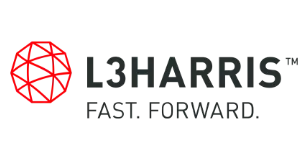
Global Non-Hodgkin Lymphoma (NHL) Market Research Report: Forecast (2022-27)
By Diagnosis (Biopsy (Excisional or Incisional, Needle, Bone Marrow Aspiration & Biopsy, Lumbar Puncture (Spinal Tap)), Lab Tests, Imaging (Chest X-Ray, CT Scan, MRI, PET Scan, Ult...rasound), Blood Tests), By Treatment (Surgery, Stem Cell Transplant, Chemotherapy, Immunotherapy (Monoclonal Antibodies, Antibody-drug Conjugates, Immunomodulatory Drugs, CAR T-cell therapy), Targeted Therapy, Radiation Therapy), By End-User (Hospitals, Specialty Clinics, Others (Ambulatory Surgery Centers, etc.)), By Region (North America, South America, Europe, Middle East & Africa, Asia-Pacific), By Country (The US, Canada, Mexico, Brazil, The UK, Germany, France, Italy, Spain, South Africa, GCC, China, Japan, India, Australia, South East Asia) By Company (AstraZeneca PLC, AbbVie Inc., Baxter International Inc., Bayer AG, Bristol Myers Squibb, Eli Lilly and Company, GlaxoSmithKline PLC, F. Hoffmann-La Roche AG, Merck & Co., Inc., Novartis International AG, Pfizer Inc., Others) Read more
- Healthcare
- Jul 2022
- Pages 180
- Report Format: PDF, Excel, PPT
Market Definition
Non-Hodgkin Lymphoma (NHL) is cancer that usually starts in the body's lymphatic system, wherein lymphocytes grow abnormally & develop tumors throughout the body. Although NHL mainly occurs in adults, children can get it too. The disease can be lethal if not treated effectively and, in turn, result in a shorter life span for patients. However, various clinical trials conducted by the leading biotechnological & pharmaceutical companies worldwide for new drug developments, particularly for the relapsed & refractory cases, have aided in improving the prognosis for people with Non-Hodgkin Lymphoma.
Market Insights
The Global Non-Hodgkin Lymphoma (NHL) Market is expected to grow at around 7.6% CAGR during the forecast period, i.e., 2022-27. The growth of the market would be driven primarily by the rising prevalence of B-cell lymphoma worldwide and mounting side effects of chemotherapy treatment, which, in turn, is leading to substantial R&D investments in procuring novel drugs to cure NHL. Besides, rapid drug approvals for B-cell lymphoma treatment in both developed & emerging countries and the impressive pipeline of targeted therapies, coupled with the label expansion of currently available therapies for treating various subtypes of NHL, are also driving the market.
| Report Coverage | Details |
|---|---|
| Study Period | Historical Data: 2017-20 |
| Base Year: 2021 | |
| Forecast Period: 2022-27 | |
| CAGR (2022-2027) | 7.6% |
| Regions Covered | North America: The US, Canada, Mexico |
| South America: Brazil, Rest of South America | |
| Europe: Germany, The UK, France, Spain, Italy, Rest of Europe | |
| Asia-Pacific: China, Japan, India, Australia, South East Asia, Rest of Asia Pacific | |
| Middle East & Africa: GCC, South Africa, Rest of Middle East and Africa | |
| Key Companies Profiled | AstraZeneca PLC, AbbVie Inc., Baxter International Inc., Bayer AG, Bristol Myers Squibb, Eli Lilly and Company, GlaxoSmithKline PLC, F. Hoffmann-La Roche AG, Merck & Co., Inc., Novartis International AG, Pfizer Inc., Others |
| Unit Denominations | USD Million/Billion |
Non-Hodgkin Lymphoma is usually more observed across countries with high living standards. BCLs (B-cell lymphomas) account for the majority of NHL cases, whereas FL (Follicular lymphoma) & DLBCL (Diffuse Large B-Cell Lymphoma) are the most common indolent & aggressive subtypes of NHL, respectively. Patients with NHL often require aggressive & accurate modes of treatment due to no show of symptoms, which results in the diagnosis of the disease in advanced stages.
There are different treatment options for NHL, which depend entirely on its subtype & stage. They may include chemotherapy, stem cell transplant, immunotherapy (Monoclonal Antibodies, Antibody-drug Conjugates, Immunomodulatory Drugs, & CAR T-cell therapy), targeted therapies, radiation therapy, & surgery. There are high unmet patient needs for the treatment of Non-Hodgkin Lymphoma, i.e., leading to the launch of promising therapeutic drugs, which will further augment the growth of the Global Non-Hodgkin Lymphoma (NHL) Market through 2027.

Market Segmentation
Based on Treatment:
- Surgery
- Stem Cell Transplant
- Chemotherapy
- Immunotherapy
- Monoclonal Antibodies
- Antibody-drug Conjugates
- Immunomodulatory Drugs
- CAR T-cell therapy
- Targeted Therapy
- Radiation Therapy
Among all treatments, monoclonal antibodies (mAbs) of immunotherapy accounted for the largest share in the Global Non-Hodgkin Lymphoma (NHL) Market owing to their outstanding mechanism of action. Highly specific mAbs are directed at lymphoma cells and used as the first-line treatment as well as for recurrence of certain forms of NHL. Monoclonal antibodies are highly versatile, more effective, & show relatively fewer side effects than other therapeutics, which makes them suitable for targeting different sub-categories of NHL. As a result, the leading pharma companies are increasing the indication of already available mAbs for other cancer categories in order to expand their global presence.
On the other hand, CAR T-cell therapy is emerging as the most promising treatment for many subtypes of Non-Hodgkin Lymphoma, owing to its high efficiency in treating NHL patients. However, researchers are working toward further improving its efficacy & speeding up the response rate.
Cytokine Release Syndrome (CRS) & neurotoxicity induced by CAR T-cell therapy can result in considerable morbidity in patients. Hence, targeted molecular therapies, antibody-drug compounds, checkpoint inhibitors, & T-cell engagers in combination with CAR-T cell treatment are being adopted to minimize the side effects while yielding positive outcomes in NHL treatment.
Recent Drug Approvals by FDA for Non-Hodgkin Lymphoma
- In May 2022, FDA granted accelerated approval to Kymriah, tisagenlecleucel, developed by Novartis Pharmaceuticals Corporation, for adult patients with relapsed or refractory FL (Follicular Lymphoma) post at least two lines of systemic therapy.
- In April 2022, the association approved Yescarta (axicabtagene ciloleucel), developed by Kite Pharma, Inc., for adults with LBCL (Large B-cell Lymphoma), i.e., refractory to or relapses within 12 months of first-line chemoimmunotherapy. The therapy is not indicated for patients with primary central nervous system lymphoma.
- In December 2021, Rituxan (rituximab), developed by Genentech, Inc., in combination with chemotherapy, got FDA-approved for previously untreated patients over six months & below 18 years with advanced stage CD20-positive DLBCL, BLL (Burkitt-like lymphoma), mature B-AL (B-cell Acute Leukemia), or BL (Burkitt lymphoma).
Regional Landscape
Geographically, the Global Non-Hodgkin Lymphoma (NHL) Market expands across:
- North America
- South America
- Europe
- Middle East & Africa
- Asia-Pacific
Of all regions globally, North America would continue its dominance in the Non-Hodgkin Lymphoma (NHL) Market during 2022-27, owing primarily to the well-established healthcare facilities, early adoption of advanced healthcare technologies, and the rising incidence of B-cell NHL. It, in turn, is leading to the burgeoning adoption of expensive therapeutics for the NHL treatment across the region and fueling the overall market growth.
On the other hand, Asia-Pacific is expected to register rapid market growth over the forecast years, owing to the rising prevalence of several forms of NHL and massive investments in developing robust healthcare infrastructure to cater to patient requirements. Several biopharma companies across the region are investing in developing novel drug therapies to meet the growing demand for NHL treatment. In addition, with the mounting consumer awareness about the disease and the increasing regulatory approvals for expensive therapeutics like KYMRIAH (tisagenlecleucel) in Japan, the overall growth of the Non-Hodgkin Lymphoma (NHL) Market would notably expand across Asia-Pacific through 2027.
Market Dynamics:
Key Driver: Mounting Incidence of B-Cell Lymphoma & Improved Prognosis using Advanced Therapeutics
The growing patient pool for blood cancers, especially B-cell lymphomas, i.e., instigating the need for better clinical & therapeutic patient outcomes in refractory or relapsed cases, is the prime aspect projected to drive the Global Non-Hodgkin Lymphoma (NHL) Market during 2022-27. Moreover, rigorous R&D activities in developing efficient therapeutics for Non-Hodgkin Lymphoma have led to an overall improved prognosis. It, in turn, is driving more individuals toward adopting advanced treatments, which further projects remunerative prospects for the global market over the forecast years.
Growth Restraint: Skyrocketing Cost of Advanced NHL Therapeutics
The high cost of treatments, like immunotherapy, which restricts a large number of patients from opting for the required treatments due to the unavailability of appropriate payment options, is the most prominent growth restraint for the Global Non-Hodgkin Lymphoma (NHL) Market during 2022-27.
Key Questions Answered in the Market Research Report:
- What are the overall statistics or estimates (Overview, Size- By Value, Forecast Numbers, Segmentation, Shares) of the Global Non-Hodgkin Lymphoma (NHL) Market?
- What are the region-wise industry size, growth drivers, and challenges?
- What are the key innovations, opportunities, current & future trends, and regulations in the Global Non-Hodgkin Lymphoma (NHL) Market?
- Who are the key competitors, their key strengths & weaknesses, and how do they perform in the Global Non-Hodgkin Lymphoma (NHL) Market based on the competitive benchmarking matrix?
- What are the key results derived from surveys conducted during the Global Non-Hodgkin Lymphoma (NHL) Market study?
Frequently Asked Questions
- Introduction
- Research Process
- Assumption
- Market Segmentation
- Market Definition
- Executive Summary
- Global Non-Hodgkin's Lymphoma (NHL) Market Trends & Insights
- Global Non-Hodgkin’s Lymphoma (NHL) Market Regulation & Policy, By Country
- Global Non-Hodgkin’s Lymphoma (NHL) Market Dynamics
- Growth Drivers
- Challenges
- Impact Analysis
- Global Non-Hodgkin’s Lymphoma (NHL) Market Hotspot and Opportunities
- Global Non-Hodgkin’s Lymphoma (NHL) Market Outlook, 2017- 2027
- Market Size and Analysis
- By Revenues in USD Million
- Market Share and Analysis
- By Diagnosis
- Biopsy
- Excisional or Incisional
- Needle
- Bone Marrow Aspiration & Biopsy
- Lumbar Puncture (Spinal Tap)
- Lab Tests
- Imaging
- Chest X-Ray
- CT Scan
- MRI
- PET Scan
- Ultrasound
- Blood Tests
- Biopsy
- By Treatment
- Surgery
- Stem Cell Transplant
- Chemotherapy
- Immunotherapy
- Monoclonal Antibodies
- Antibody-drug Conjugates
- Immunomodulatory Drugs
- CAR T-cell therapy
- Targeted Therapy
- Radiation Therapy
- By End-User
- Hospitals
- Specialty Clinics
- Others (Ambulatory Surgery Centers, etc.)
- By Region
- North America
- South America
- Europe
- Middle East & Africa
- Asia-Pacific
- By Company
- Competition Characteristics
- Revenue Shares
- Competitor Placement in MarkNtel Advisor’s Quadrant
- By Diagnosis
- Market Size and Analysis
- North America Non-Hodgkin’s Lymphoma (NHL) Market Outlook, 2017- 2027
- Market Size and Analysis
- By Revenues in USD Million
- Market Share and Analysis
- By Diagnosis
- By Treatment
- By End-User
- By Country
- The US
- Canada
- Mexico
- Market Size and Analysis
- South America Non-Hodgkin’s Lymphoma (NHL) Market Outlook, 2017- 2027
- Market Size and Analysis
- By Revenues in USD Million
- Market Share and Analysis
- By Diagnosis
- By Treatment
- By End-User
- By Country
- Brazil
- Rest of Latin America
- Market Size and Analysis
- Europe Non-Hodgkin’s Lymphoma (NHL) Market Outlook, 2017- 2027
- Market Size and Analysis
- By Revenues in USD Million
- Market Share and Analysis
- By Diagnosis
- By Treatment
- By End-User
- By Country
- The UK
- Germany
- France
- Italy
- Spain
- Rest of Europe
- Market Size and Analysis
- Middle East & Africa Non-Hodgkin’s Lymphoma (NHL) Market Outlook, 2017- 2027
- Market Size and Analysis
- By Revenues in USD Million
- Market Share and Analysis
- By Diagnosis
- By Treatment
- By End-User
- By Country
- South Africa
- GCC
- Rest of Middle East & Africa
- Market Size and Analysis
- Asia-Pacific Non-Hodgkin’s Lymphoma (NHL) Market Outlook, 2017- 2027
- Market Size and Analysis
- By Revenues in USD Million
- Market Share and Analysis
- By Diagnosis
- By Treatment
- By End-User
- By Country
- China
- Japan
- India
- Australia
- South East Asia
- Rest of Asia-Pacific
- Market Size and Analysis
- Global Non-Hodgkin’s Lymphoma (NHL) Market Key Strategic Imperatives for Success and Growth
- Competitive Outlook
- Competition Matrix
- By Application Portfolio
- Brand Specialization
- Target Markets
- Target by Applications
- Research & Development
- Strategic Alliances
- Strategic Initiatives
- Company Profiles (Business Description, By Application Segments, Business Segments, Financials, Strategic Alliances/ Partnerships, Future Plans)
- AstraZeneca PLC
- AbbVie Inc.
- Baxter International Inc.
- Bayer AG
- Bristol Myers Squibb
- Eli Lilly and Company
- GlaxoSmithKline PLC
- F. Hoffmann-La Roche AG
- Merck & Co., Inc.
- Novartis International AG
- Pfizer Inc.
- Others
- Competition Matrix
- Disclaimer
MarkNtel Advisors follows a robust and iterative research methodology designed to ensure maximum accuracy and minimize deviation in market estimates and forecasts. Our approach combines both bottom-up and top-down techniques to effectively segment and quantify various aspects of the market. A consistent feature across all our research reports is data triangulation, which examines the market from three distinct perspectives to validate findings. Key components of our research process include:
1. Scope & Research Design At the outset, MarkNtel Advisors define the research objectives and formulate pertinent questions. This phase involves determining the type of research—qualitative or quantitative—and designing a methodology that outlines data collection methods, target demographics, and analytical tools. They also establish timelines and budgets to ensure the research aligns with client goals.
2. Sample Selection and Data Collection In this stage, the firm identifies the target audience and determines the appropriate sample size to ensure representativeness. They employ various sampling methods, such as random or stratified sampling, based on the research objectives. Data collection is carried out using tools like surveys, interviews, and observations, ensuring the gathered data is reliable and relevant.
3. Data Analysis and Validation Once data is collected, MarkNtel Advisors undertake a rigorous analysis process. This includes cleaning the data to remove inconsistencies, employing statistical software for quantitative analysis, and thematic analysis for qualitative data. Validation steps are taken to ensure the accuracy and reliability of the findings, minimizing biases and errors.

4. Data Forecast and FinalizationThe final phase involves forecasting future market trends based on the analyzed data. MarkNtel Advisors utilize predictive modeling and time series analysis to anticipate market behaviors. The insights are then compiled into comprehensive reports, featuring visual aids like charts and graphs, and include strategic recommendations to inform client decision-making









